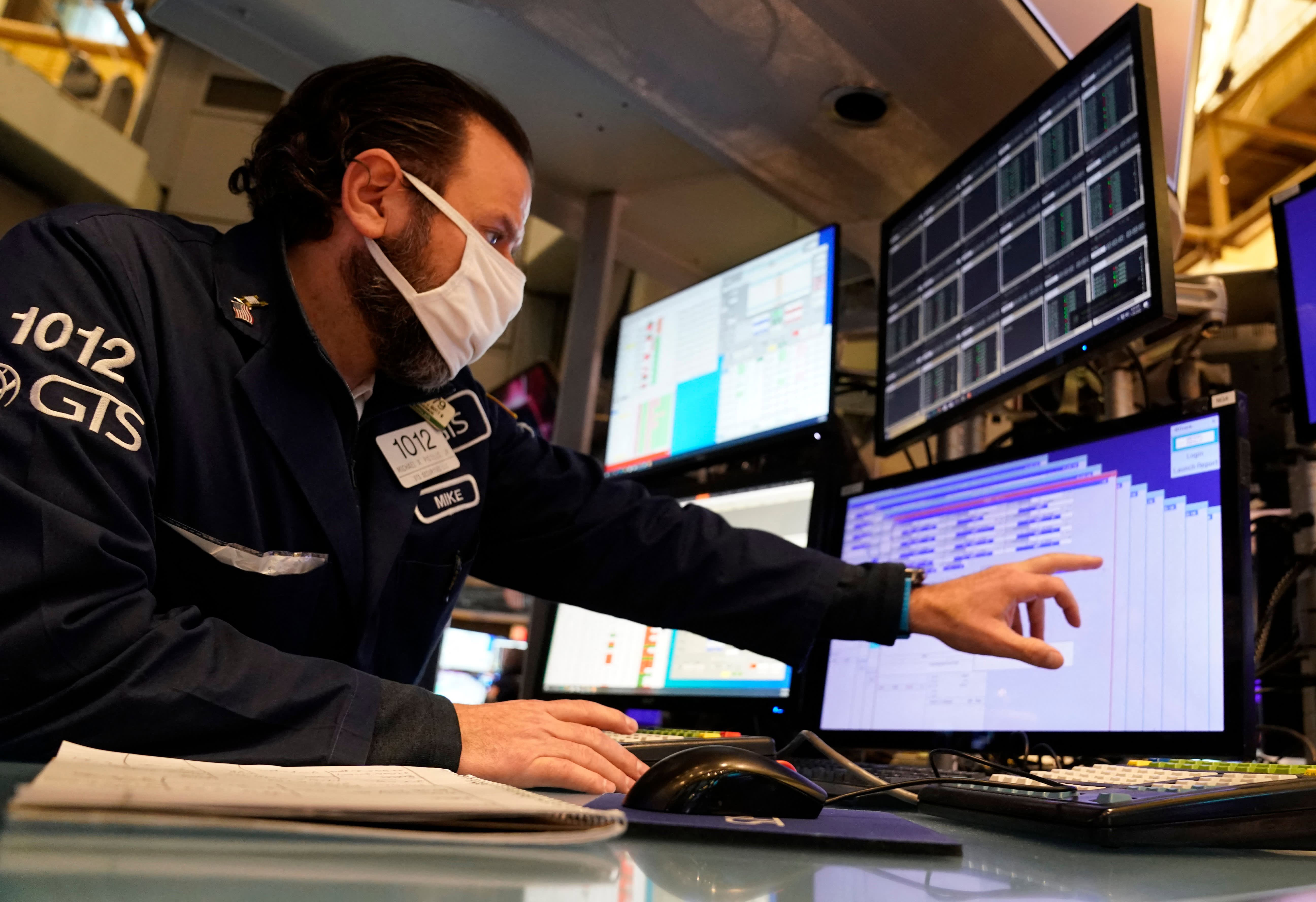Stocks are little changed to start February after S&P 500’s worst month since March 2020

Stocks inched higher Tuesday, following a wild January on Wall Street that saw investors struggle with a Federal Reserve policy shift.
The Dow Jones Industrial Average rose about 35 points. The S&P 500 ticked up 0.2% and the Nasdaq Composite added 0.4%.
“The market is just marginally lower for today so I’m not surprised that we did have some selling early on simply because, hey, we’ve had two very nice days back to back,” said Sam Stovall, chief investment strategist at CFRA.
“We’re starting February on a traditionally weak note in that it is the second worst month of the year and on average for the S&P, posting a minor decline on average and rising only 53%,” he added. “That makes it second worst only to September’s deeper average decline. To make matters worse, February has fallen even more whenever it follows a down January.”
The major averages declined at one point after data from the Institute for Supply Management showed inflation in the manufacturing sector surged last month. The benchmark 10-year yield topped 1.8% on the back of that data.
Tech names began sliding following the report, while bank stocks gained. Microsoft slipped 1.1%. Wells Fargo added more than 2%, while JPMorgan and Goldman each gained more than 1%.
The moves follow a two-day rally on Wall Street that ended a volatile month of trading.
Over the past several days, investors have stepped in to buy a dip that briefly knocked the S&P 500 into correction territory — down at least 10% from a recent high. The large-cap index is up more than 3% in the past week.
While stocks pulled off a tech-driven rally Monday — with the Nasdaq surging more than 3% — the major averages still suffered a brutal month marked by wild price swings. The blue-chip Dow slid 3.3% for the month. The S&P 500 and Nasdaq suffered their worst monthly declines since March 2020, falling 5.3% and 8.98%, respectively. It was also the S&P 500′s biggest January decline since 2009.
January’s sell-off came as the Fed signaled its readiness to tighten monetary policy, including raising interest rates multiple times this year, to tame inflation that has shot up to the highest level in nearly four decades, and reducing its balance sheet. Investors flocked out of growth-oriented technology shares, which are particularly sensitive to rising rates.
Volatility exploded as investors deciphered the Fed’s messaging on its policy pivot. At one point last week, the S&P 500 dipped into correction territory on an intraday basis. The recent comeback pushed the large-cap benchmark 6.3% below its peak. Meanwhile, the tech-heavy Nasdaq is still in a correction, down 13% from its all-time high.
Ed Yardeni, president of Yardeni Research, said last month’s market activity hasn’t turned him bearish, however.
“We believe that once the FOMC starts to raise the federal funds rate and details the pace of running off the Fed’s balance sheet, the financial markets will learn to live with tightening monetary policy as long as it doesn’t risk causing a recession,” he said Tuesday.
Still, many Wall Street strategists are reminding investors that corrections are normal in bull markets. Since 1950, there have been 33 S&P 500 corrections of 10% or more since 1950, and the median episode has lasted about five months, according to Goldman Sachs.
“The latest decline is a normal market correction that does not signal a recession or the end of this bull market,” said Chris Haverland, global equity strategist at Wells Fargo. “We continue to believe that economic growth and corporate earnings will be solid this year, and that the Fed will not be overly aggressive in dialing back monetary policy.”
On the economic data front, the ISM manufacturing index came in at 57.6. That’s down from 58.8 in December. A reading above 50% represents expansion. The data also showed that prices jumped by 7.9 points to 76.1 month over month — another sign of rising inflation.
In corporate news of note, AT&T said it will be shedding its stake in WarnerMedia following a planned merger of the unit with Discovery. AT&T’s board also approved a post-close annual dividend of $1.11, compared to the current rate of $2.08, due to the spinoff. Shares fell 4% following the news. Discovery shares rose 2.6%.
Shares of UPS jumped 13% after the shipping company beat earnings estimates and raised its quarterly dividend 49%. Its rival FedEx added 3%, despite suspending some services due to Covid.
Shares of Exxon Mobil gained more than 3% after the company reported better-than-expected quarterly earnings and revenue that jumped more than 80% year over year.
Investors are awaiting more key earnings reports, with Alphabet, General Motors, Starbucks, AMD and PayPal due after the close.
So far, of the 172 companies in the S&P 500 that have reported earnings to date, 78.5% topped analysts’ estimates, according to Refinitiv.
“We still anticipate solid, albeit more modest, gains for markets this year, alongside more normal pullbacks, especially given the transition in monetary policy,” Keith Lerner, chief market strategist at Truist, said in a note.
—CNBC’s Hannah Miao contributed to this report.




